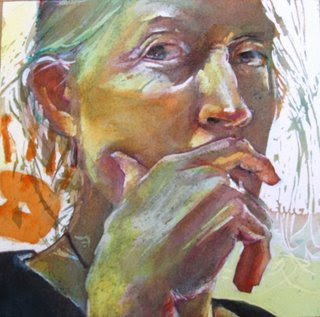






I have been looking at a book about blackwork embroidery for some ideas for designs for my big lino prints. Blackwork was popular in the 16th century. I love these portraits from that period!
I've nearly completed my carving - I can't use the press yet, so I'll be installing my prints in the Walker Terrace window for the month of June rather than May.
I colored with white pastel on these proofs to get an idea of what to carve next. I'll pull 2 proofs tomorrow to show where I'm at with these!



















































